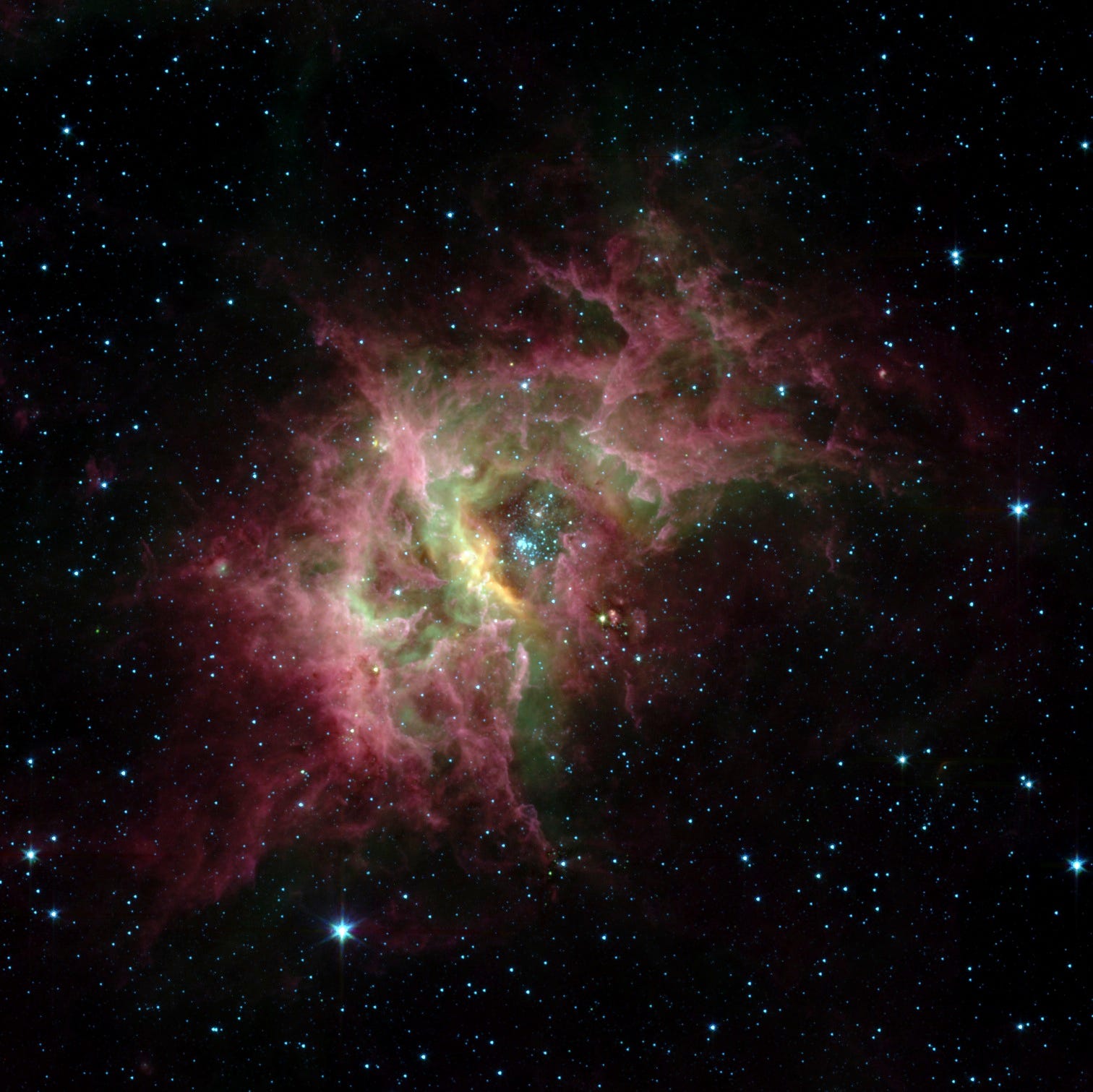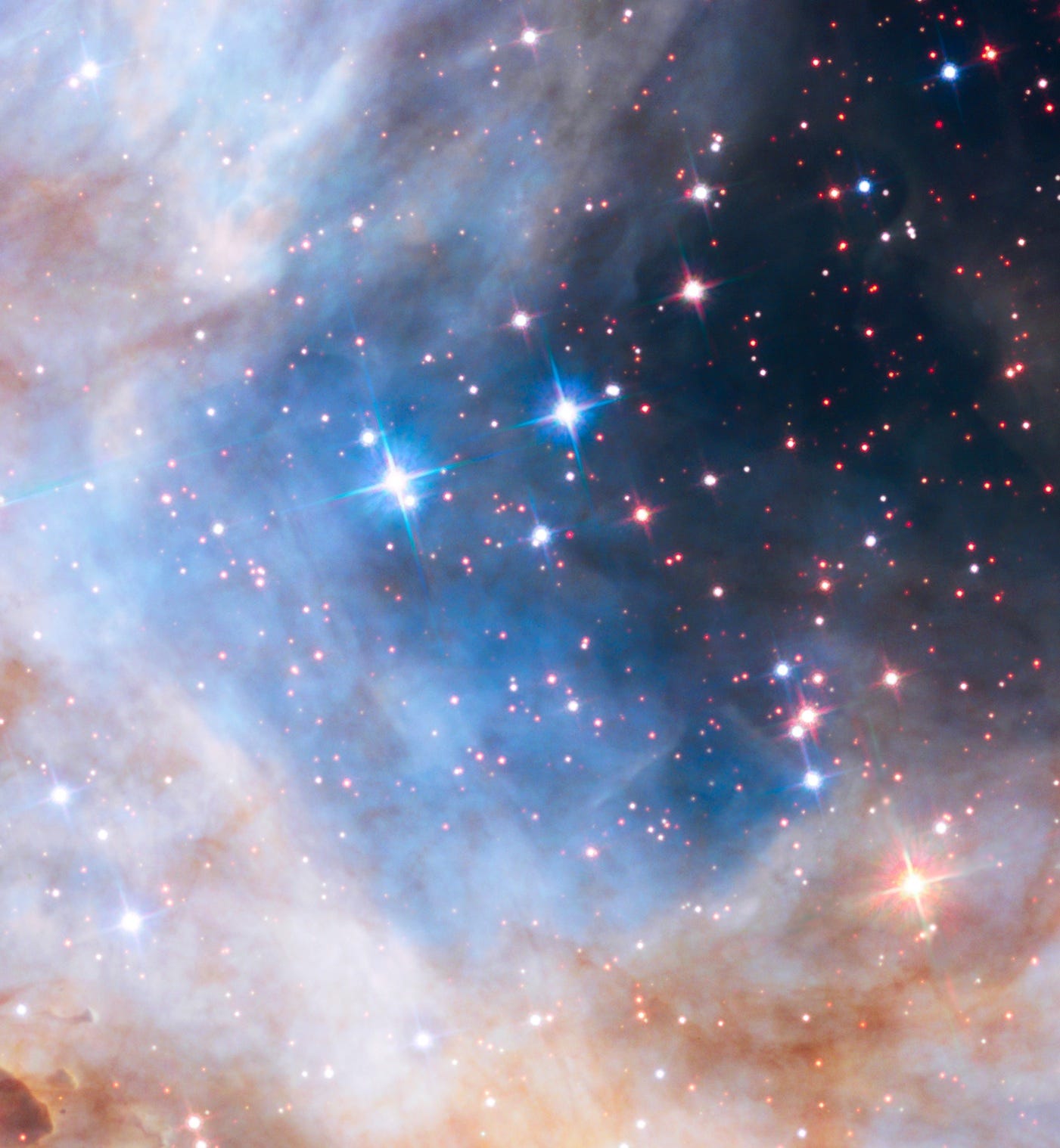Mostly Mute Monday: The Milky Way’s Largest Star Cluster
Obscured by our galactic plane, this once-unknown sight of the southern skies — Westerlund 2 — may house the Milky Way’s next supernova!
“The wonder is, not that the field of the stars is so vast, but that man has measured it.” –Anatole France







For 13.7 billion years — over 99% of the Universe’s history — we’ve been forming new stars from the hydrogen and helium left over from the Big Bang. Even today, within galaxies like our own, molecular clouds that are still over 95% pristine give rise to the same classes of stars, from red dwarfs to blue giants, as they have for all time.
Within our Milky Way, one of the newest, largest concentrations of stars is found at the heart of the nebula RCW 49 in Carina, some 14–20,000 light years away in the galactic plane: the star cluster Westerlund 2. Containing over 3,000 unique stars (and possibly many more), the hottest blue giants burn at brightnesses millions of times our Sun’s luminosity, with blue reflected light mingling with the red signature of excited hydrogen. Discovered in the 1960s, it’s just 1–2 million years old, and will possibly house our galaxy’s next supernova.
Surrounding this cluster is a huge amount of ionized gas, blown off into the intergalactic medium by the hot, new stars. The pillars, ridges, and valleys, imaged in great detail by Hubble for its 25th anniversary, are carved by the UV radiation from the hottest such stars.

Mostly Mute Monday tells the tale of an object, phenomenon or astronomical story in images, other visuals and no more than 200 words.
Leave your comments on our forum, and support Starts With A Bang on Patreon!




